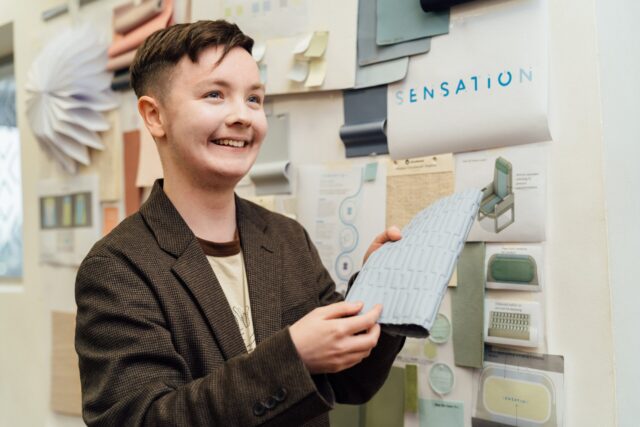ERC unveils purpose-designed medevac eVTOL

German startup ERC has unveiled its eVTOL design, created exclusively for the purpose of transporting patients and injured individuals.
Noting that ambulance transports are often too slow while helicopter flights are too expensive, ERC was formed in 2019 with its eVTOL concept solely focused on the medevac role. A first airworthy demonstrator (‘Romeo’) is planned for 2024, while the market launch of the fully certified aircraft (named ‘Charlie’) is slated for 2030.
The fixed-wing aircraft features a twin boom with vertical stabiliser, accommodating a 1.4 x 1.4m back door to “enable simple and fast loading” of patients. Its 5.2 square metres of cabin volume also provides medical staff with ample room to work. Multiple propellers are mounted on wing-borne booms at a height of 2.3m, with the aircraft’s range estimated to be 180km; sufficient to cover 90% of patient transportation missions.
“Over the past three and half years, ERC has recognised that the use of representative weights and sizes is crucial, especially for propulsion and battery technologies as well as flight control,” explained ERC, adding that this development approach helps derisk subsequent certification. In 2023, its first 2.7 ton, 13m long demonstrator (‘Echo’) commenced its flight test campaign, with over 100 flights completed so far.
Building on an existing cooperation with European air rescue organisation DRF Luftrettung and a medical pilot project for practical testing (conducted in the Unterallgäu-Memmingen health region), ERC believes “the market launch is already secured at a very early stage”.
Romeo’s first hover flight is planned for the end of 2024, with insights from testing (along with current medical requirements) will be incorporated into the first marketable eVTOL, Charlie.
ERC intend to produce 250 units a year by 2032, which will be manufactured in Germany. Subsequent autonomous models (for missions including organ transportation) are “also planned for a late date”.
















